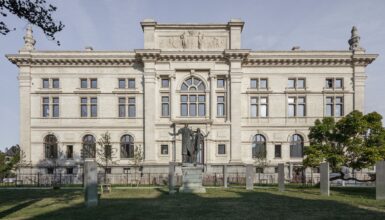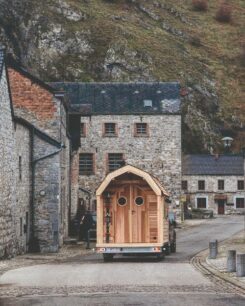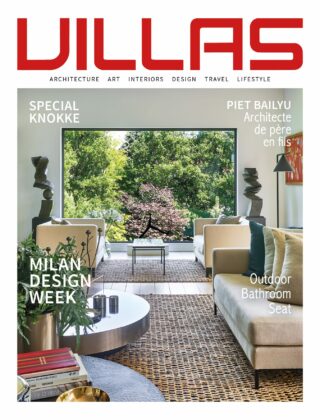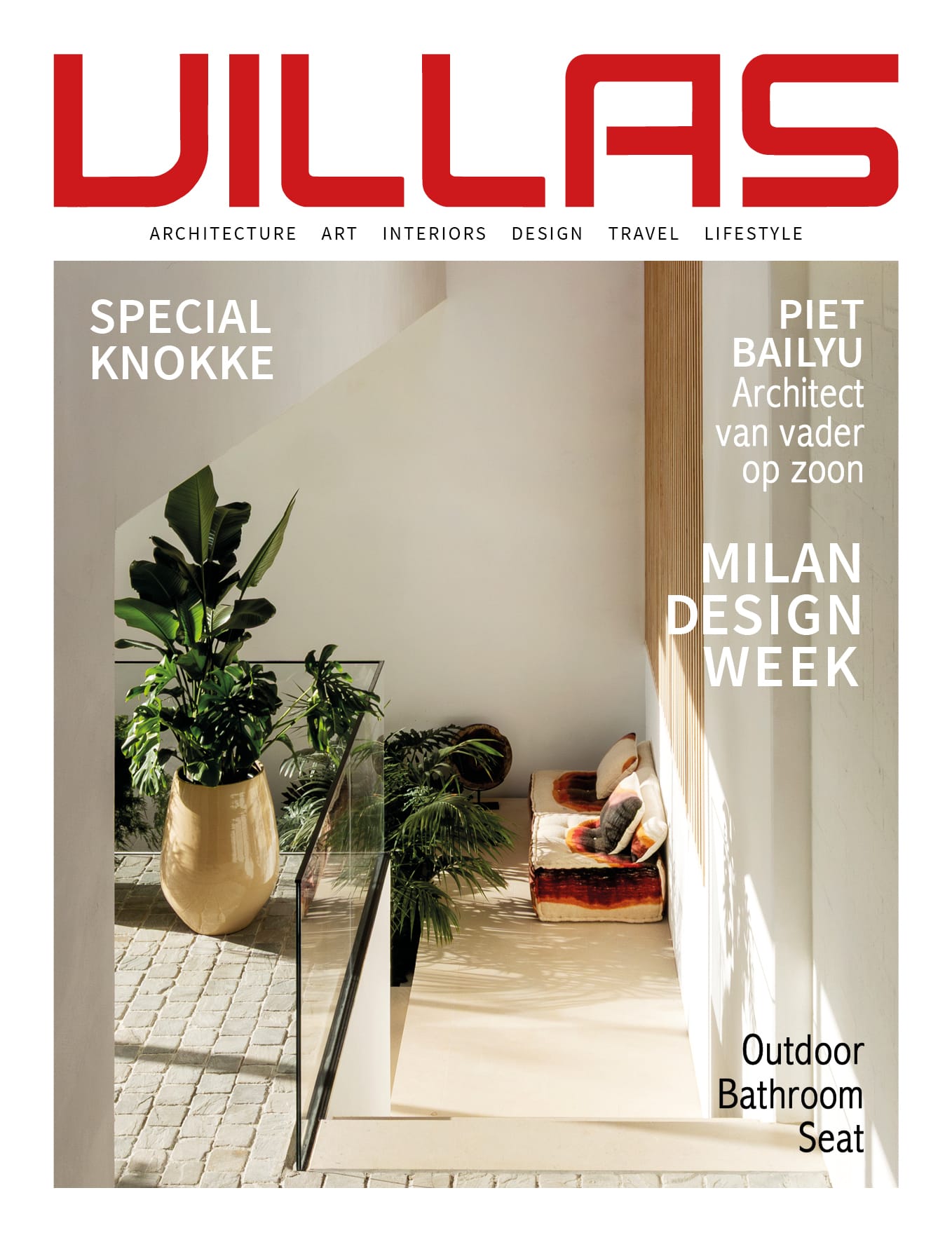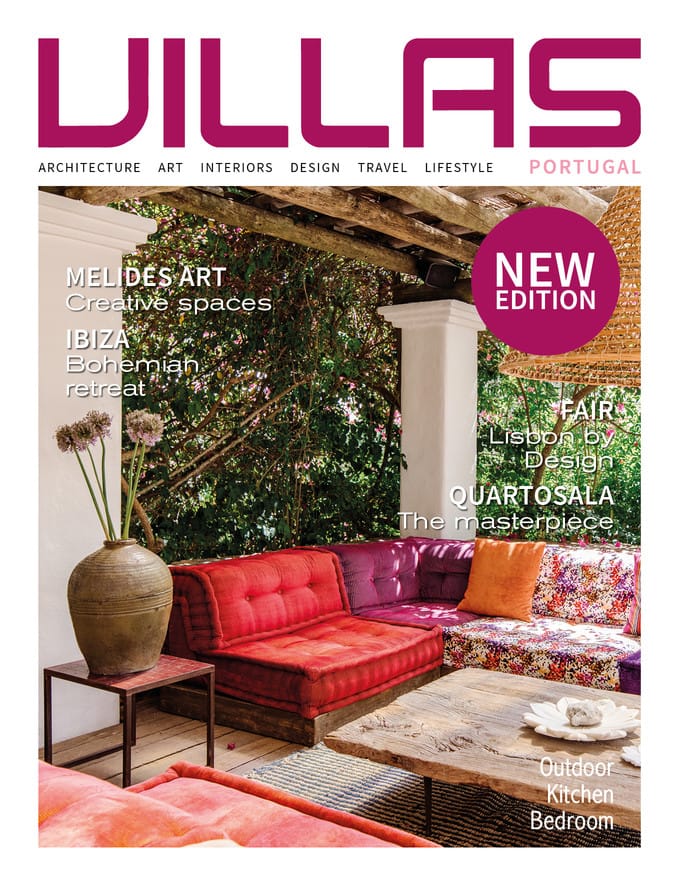Sommaire
Art nouveau / Art deco
These 2 movements are often confused with each other, but are very different.
Art nouveau celebrates elegant curves, organic shapes and the raw power of nature, with dynamic whipping motifs and long lines;
Art deco is characterised by straight lines, sharp angles and geometric shapes.
The Art nouveau period flourished between 1890 and 1914, but began to fade shortly before World War I and slowly gave way to a more modern aesthetic: Art deco, short for “decorative arts”; it involves architecture, especially interior design (tapestries, stained glass, ironwork, paintings and ornamental sculptures), and furniture (cabinetry, ceramics, silverware, etc.). The designers use principles based on colour, symmetry, geometry and cubism to create their pieces.
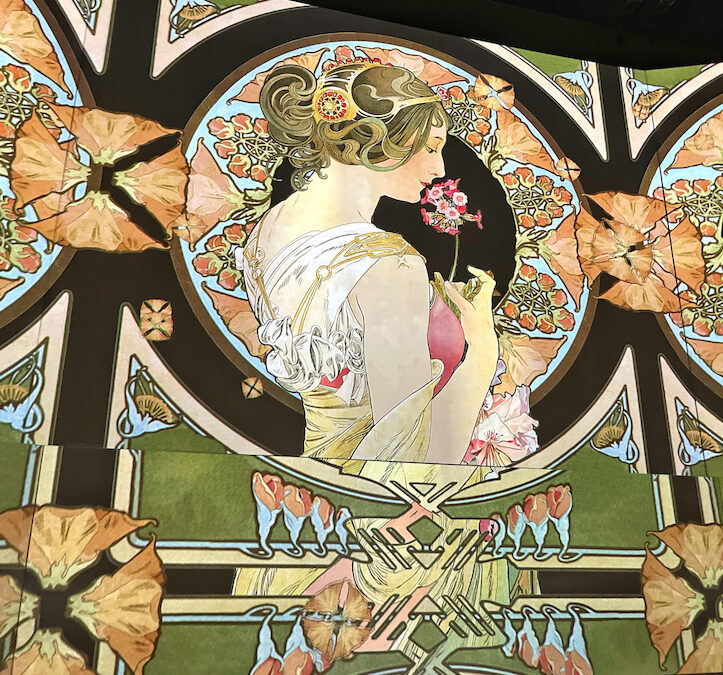
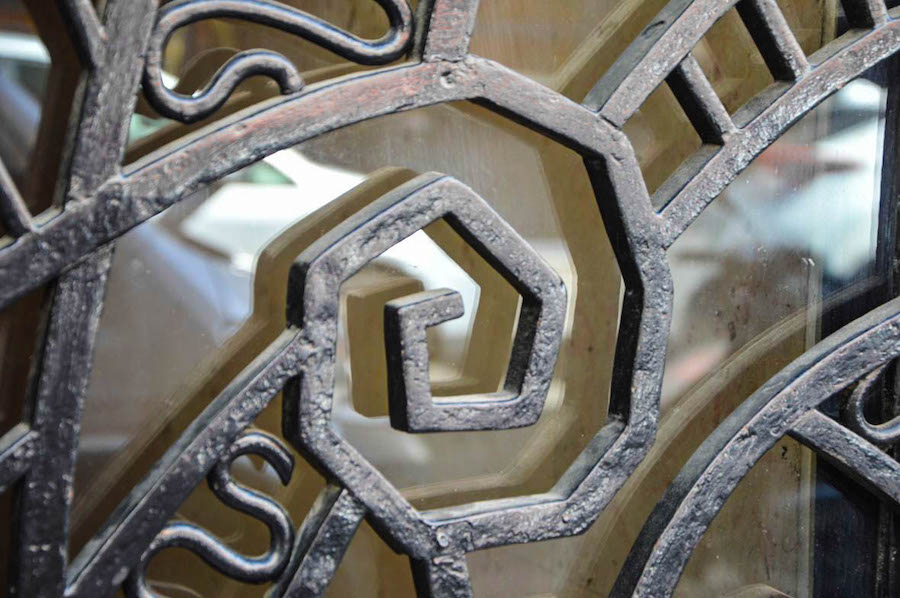
This year, there are four categories on the menu, including some “gems” from the following selection.
1/The “ESSENTIAL”
Must-see places you must have seen once in a lifetime.
Hôtel Solvay
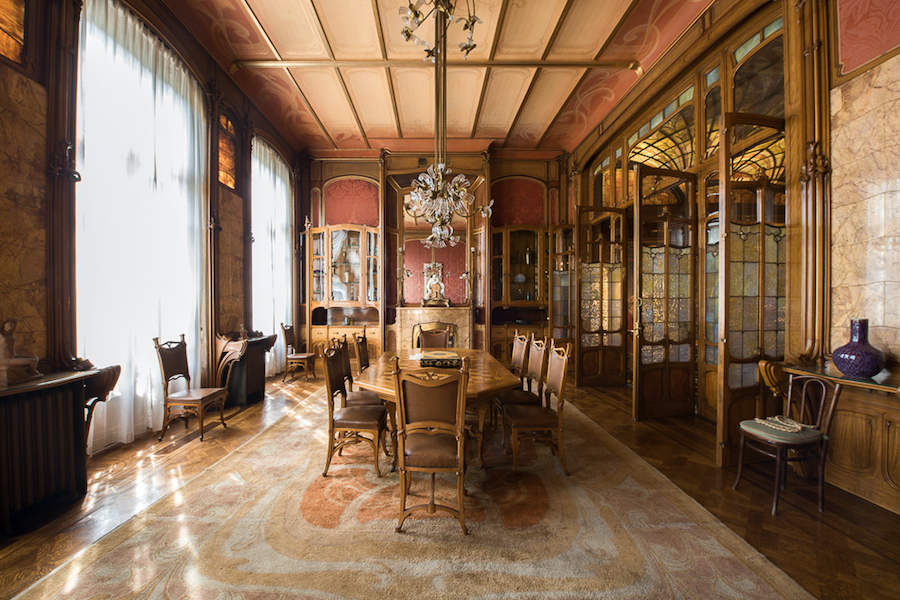
Sophie Voituron
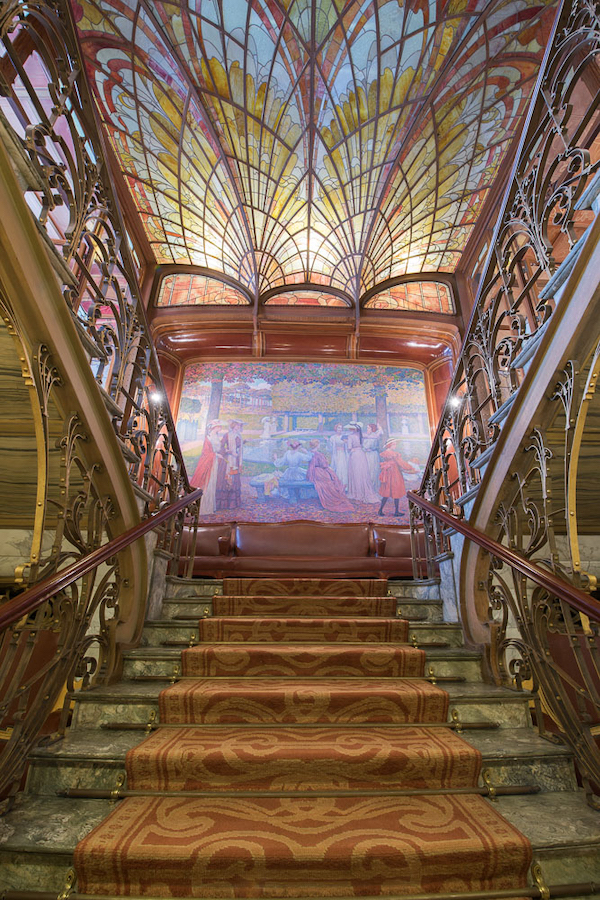
Sophie Voituron
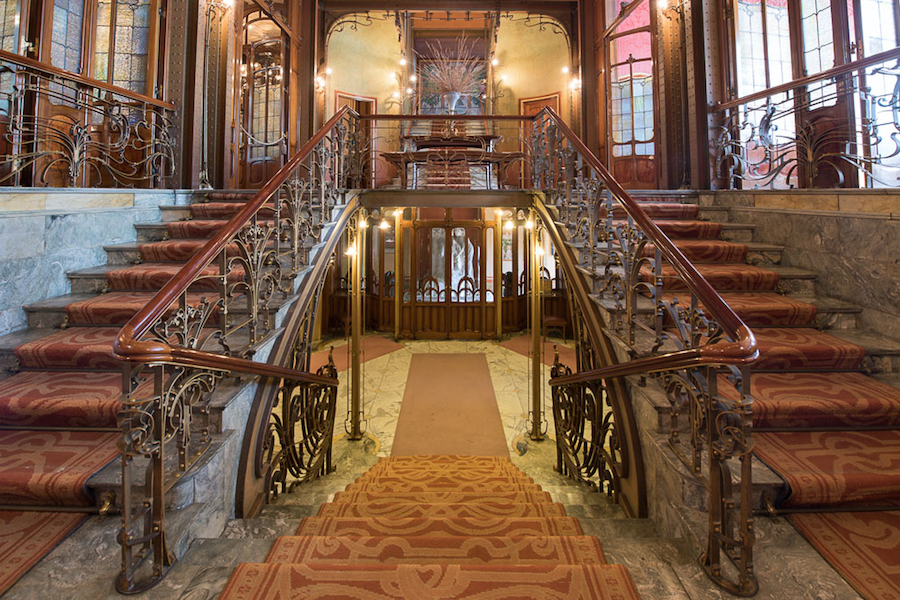
Sophie Voituron
Hôtel Solvay was built in 1894 for Armand Solvay. The project was entrusted to architect Victor Horta, who used all his artistry to create a grandiose Art Nouveau building. Precious materials such as more than 20 different types of marble and countless rare woods in orange-red shades enhance the atmosphere of luxury envisaged by the architect. A majestic coloured glass roof dominates the stairwell.
The building is a UNESCO World Heritage Site and renovation work has just begun.
Avenue Louise 224, Ixelles
Van Buuren museum and gardens
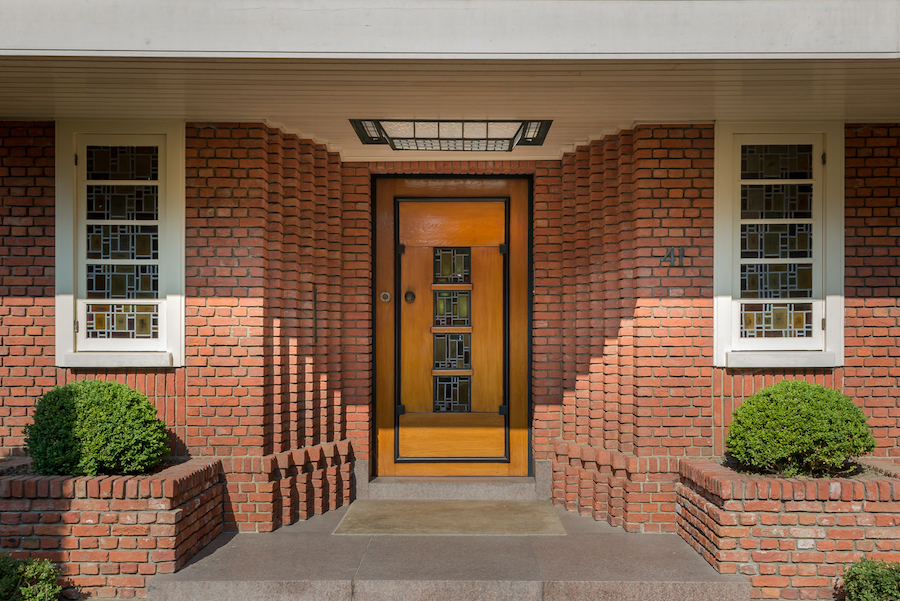
Sophie Voituron
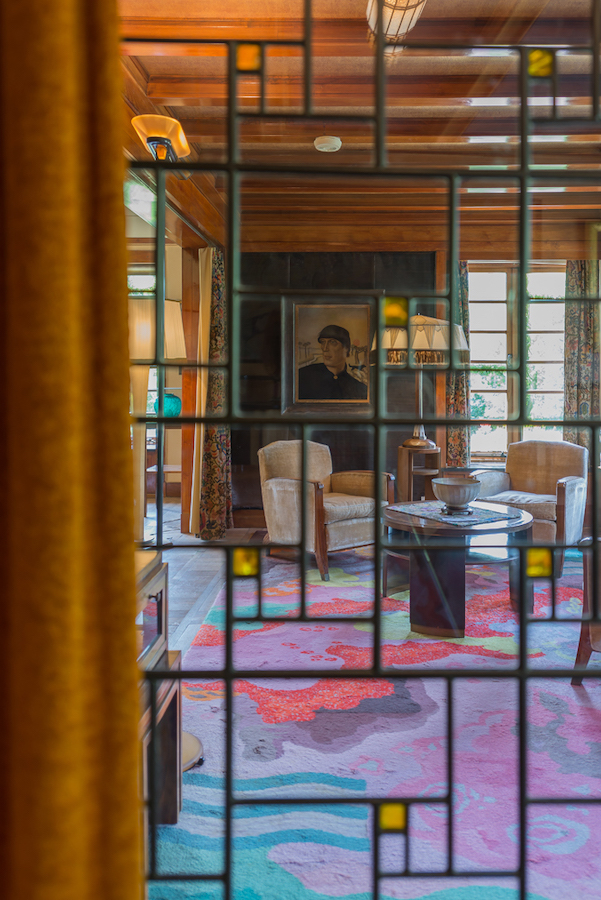
Sophie Voituron
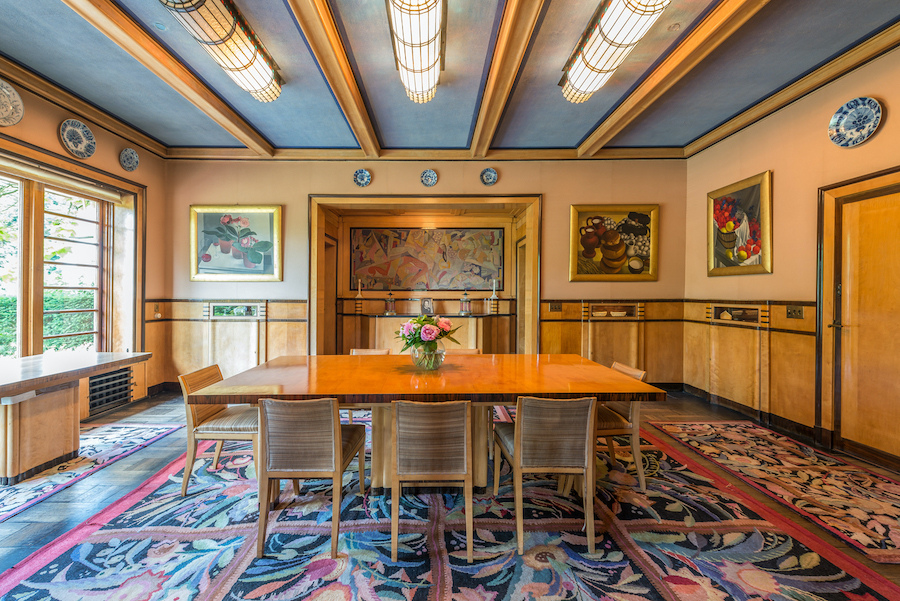
Sophie Voituron
Van Buuren Museum and gardens; the Art deco home of the Van Buurens, a Dutch patronage. In 1928, Belgian architects Léon Emmanuel Govaerts and Alexis Van Vaerenbergh designed this beautiful villa, whose exterior architecture is typical of the Amsterdam School. The interior is a beautiful Art deco ensemble, with all the furniture, carpets, paintings and objects left in their original places, giving the house a lively atmosphere.
The Van Buuren garden surrounding the museum, designed by Jules Buyssens and René Pechère, is a masterpiece of landscape architecture from the 1920s and consists of six areas that can be visited in all seasons: the large rose garden, the small rose garden, the picturesque garden, the labyrinth, the orchard and the romantic secret garden of the heart.
Léo Errera Avenue 41, Uccle
The former Josaphat school group
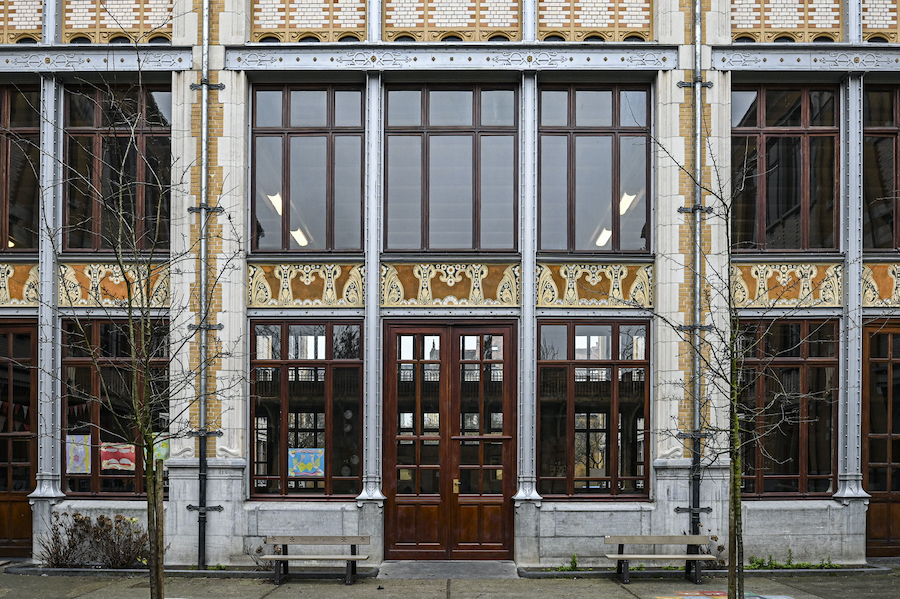
Endre Sebok
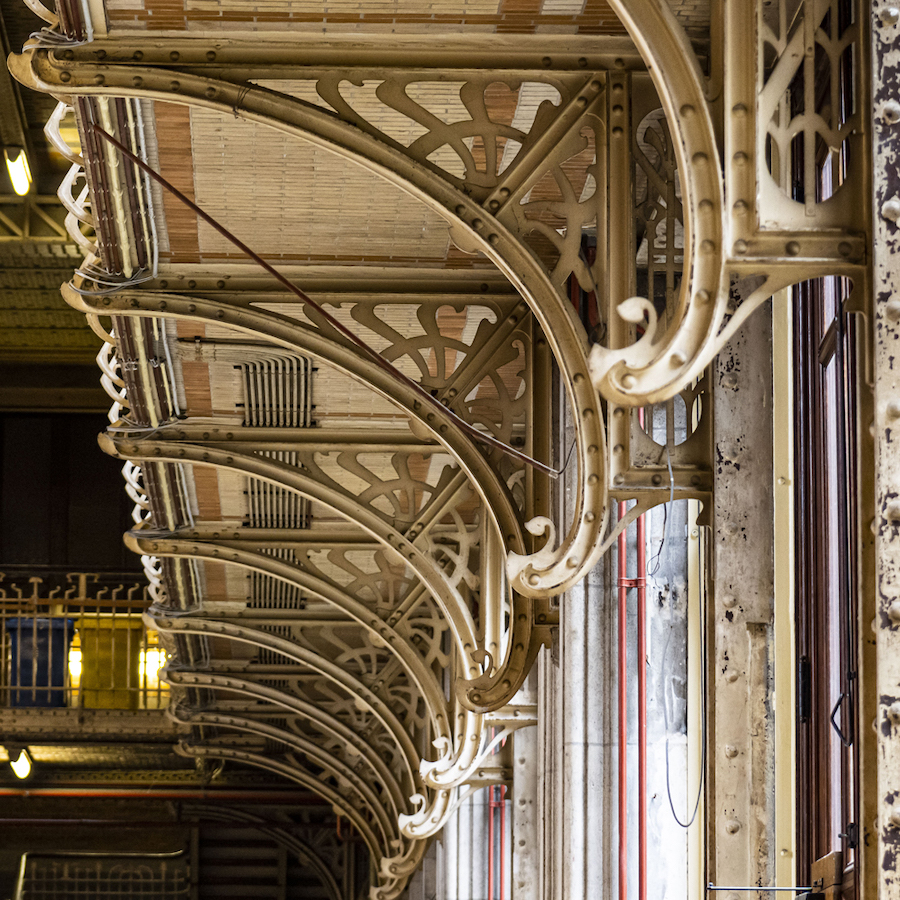
Endre Sebok
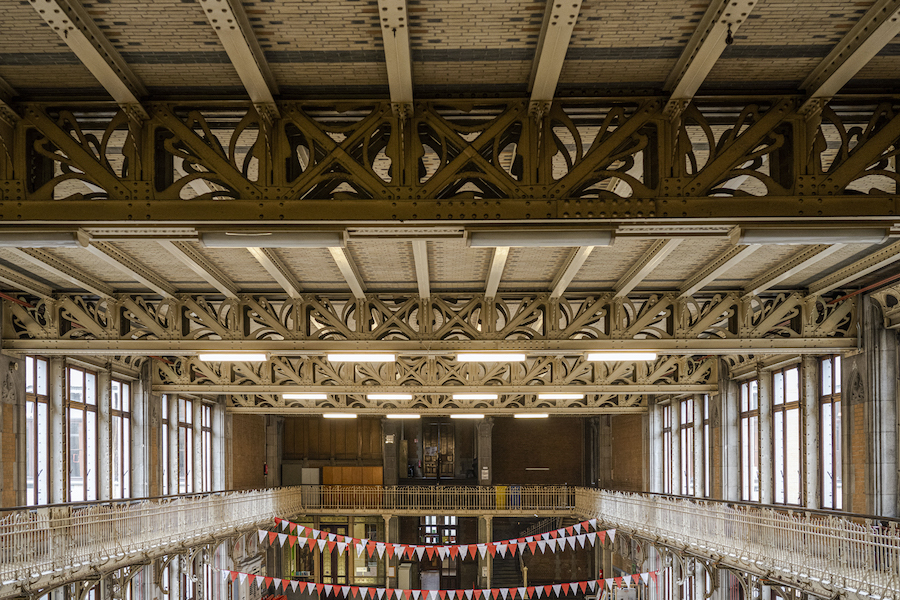
Endre Sebok
The former school group Josaphat, a school complex in Art nouveau style designed between 1900 and 1907 for the municipality of Schaerbeek by architect Henri Jacobs. With his monumental facade, this architect, who specialised in school architecture, designed not only the plans but also all the details and furniture.
Great importance was given to natural lighting throughout the complex, with a system of courtyards providing plenty of natural light. Beautiful ceilings with exposed metal beams and wrought-iron balustrades with plant-inspired motifs and oak railings typical of Art nouveau.
Don’t miss Privat Livemont’s beautiful graffiti, both on the facades and inside.
Haechtsesteenweg 266, Schaerbeek
2/THE ”CLASSIC”
Queen Elisabeth Foundation for Medicine
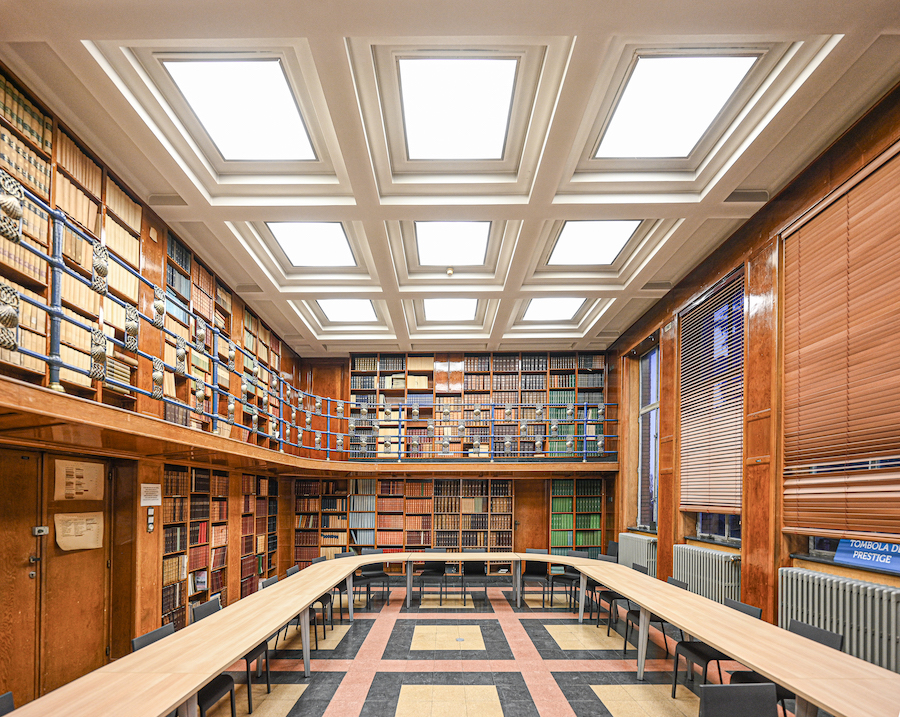
Endre Sebok
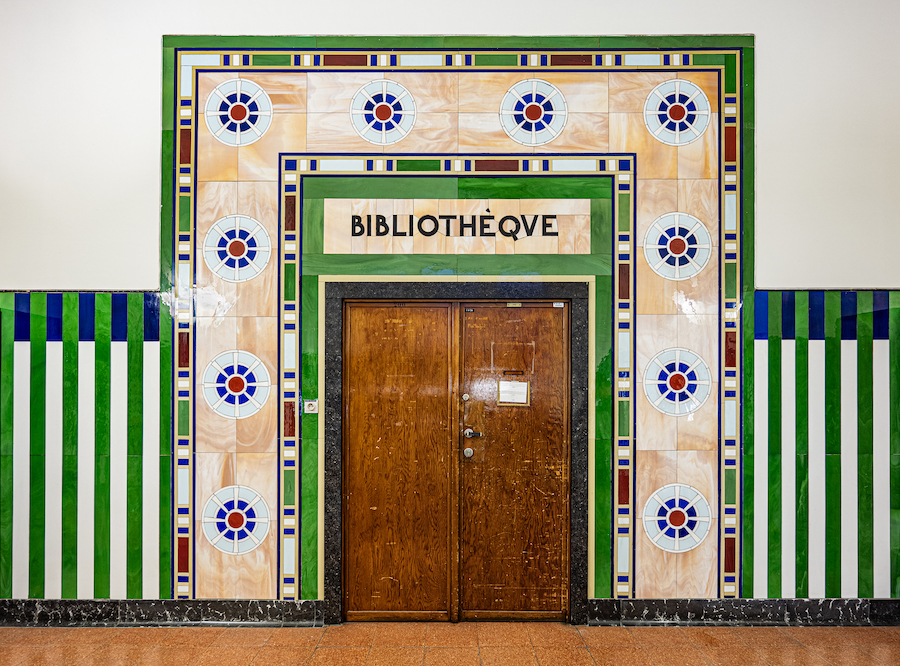
Endre Sebok
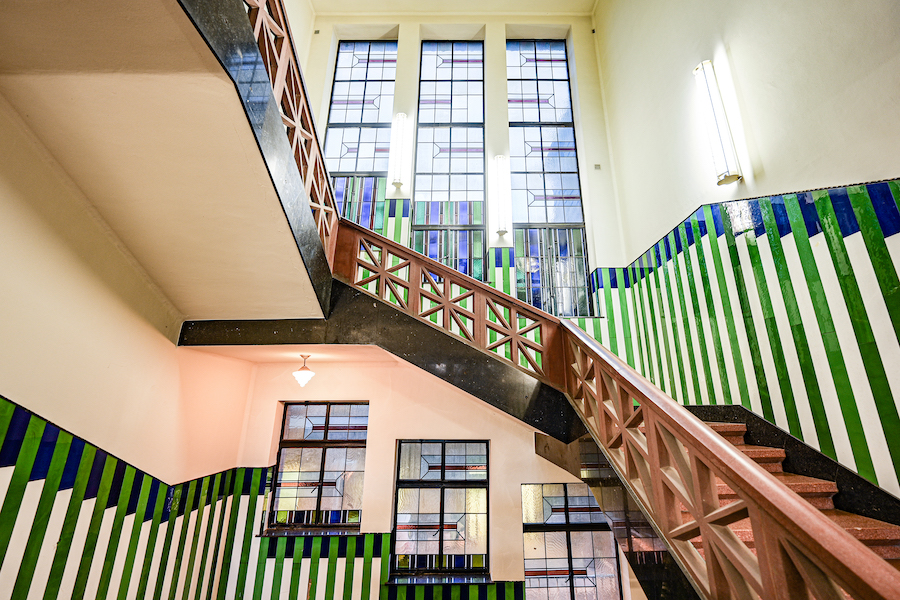
Endre Sebok
The Queen Elisabeth Foundation for Medicine, built on the site of the Brugmann Hospital on the initiative of Queen Elisabeth in 1927 to encourage research and contacts between researchers and clinicians. The two architects, Henry Lacoste and Lucien De Vestel, chose red-brown brick facades and coloured friezes.
Inside, the exceptional Art deco decoration has remained almost intact. The walls of the three stairwells are lined with vertical marble bands, the stairs are granite with handrails of polished concrete, the floors are porcellanato tiles and the stained-glass windows are inspired by the ornamental motifs and contrasting colours of ancient Egyptian décor. A large library with wood panelling on two floors.
Avenue Jean Joseph Crocq 3, Laeken
The Taverne l’Espérance
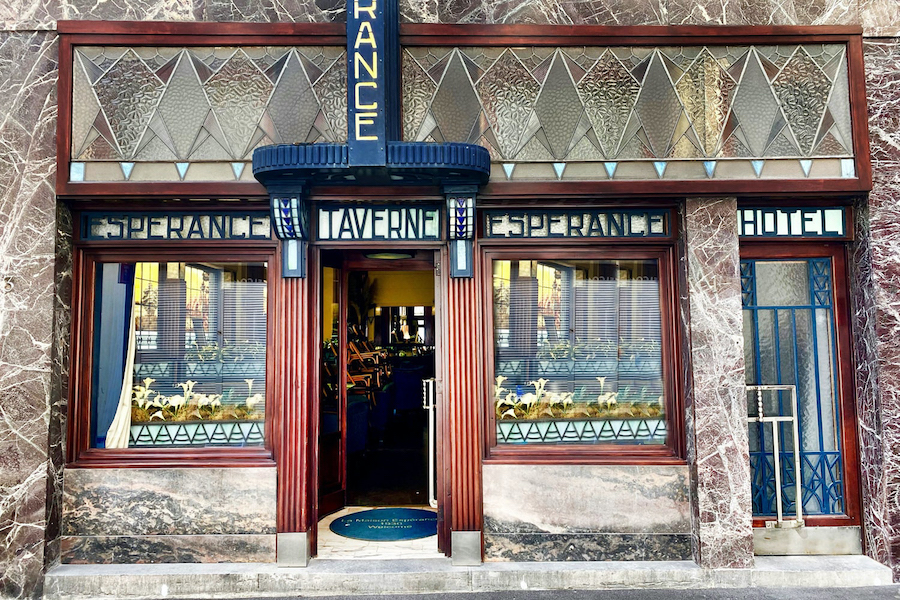
admirable-facades
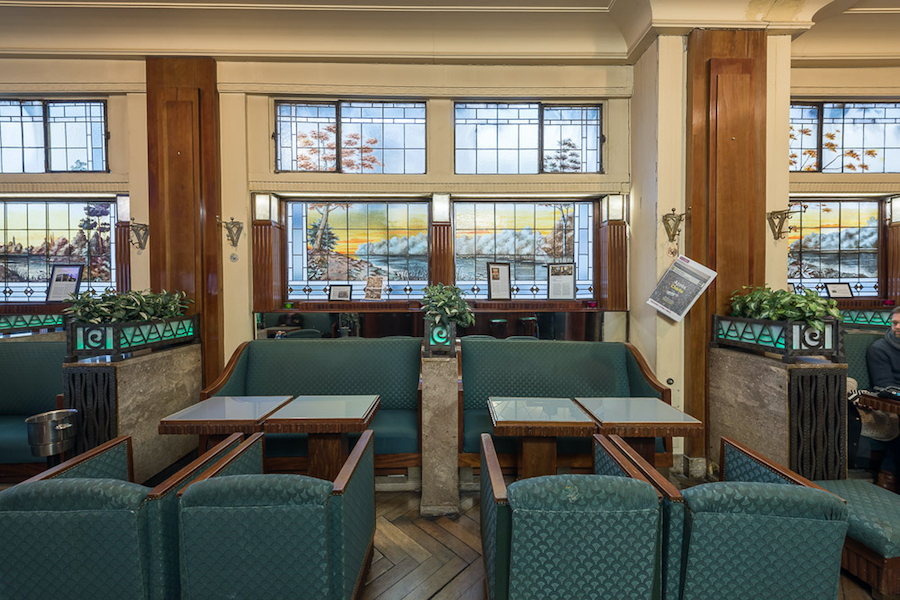
Sophie Voituron
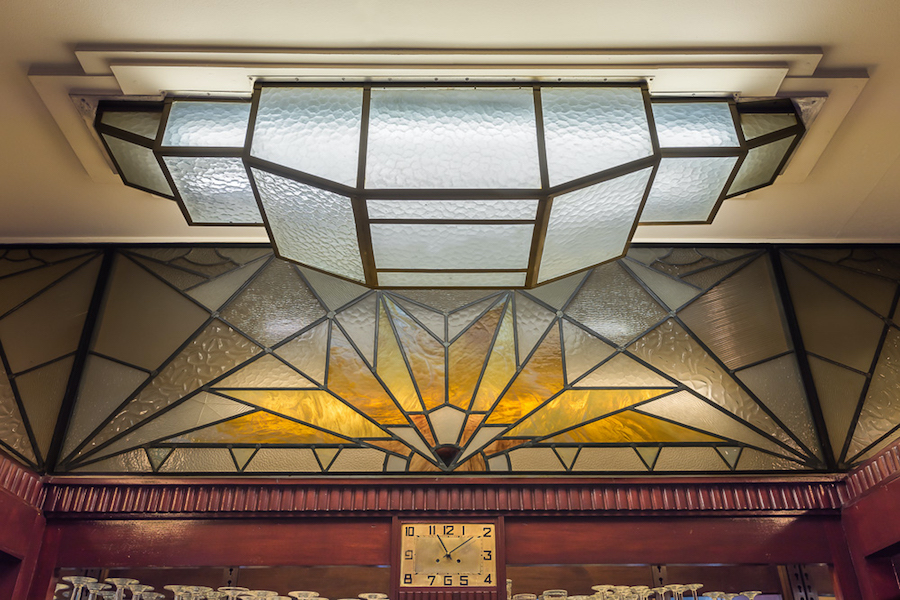
Sophie Voituron
Typical of the neighbourhood, Taverne l’Espérance, not far from rue Neuve, is a beautiful brasserie that has retained its old-fashioned atmosphere. In 1930, architect Léon Jean Joseph Govaerts transformed the building into a hotel and tavern in the purest Art Deco style.
Much of the original furniture has been preserved, including benches, flower boxes, lamps, panelling and a bar, all testifying to the atmosphere of yesteryear.
Rue du Finistère 1/3, Brussels
Hôtel Otlet
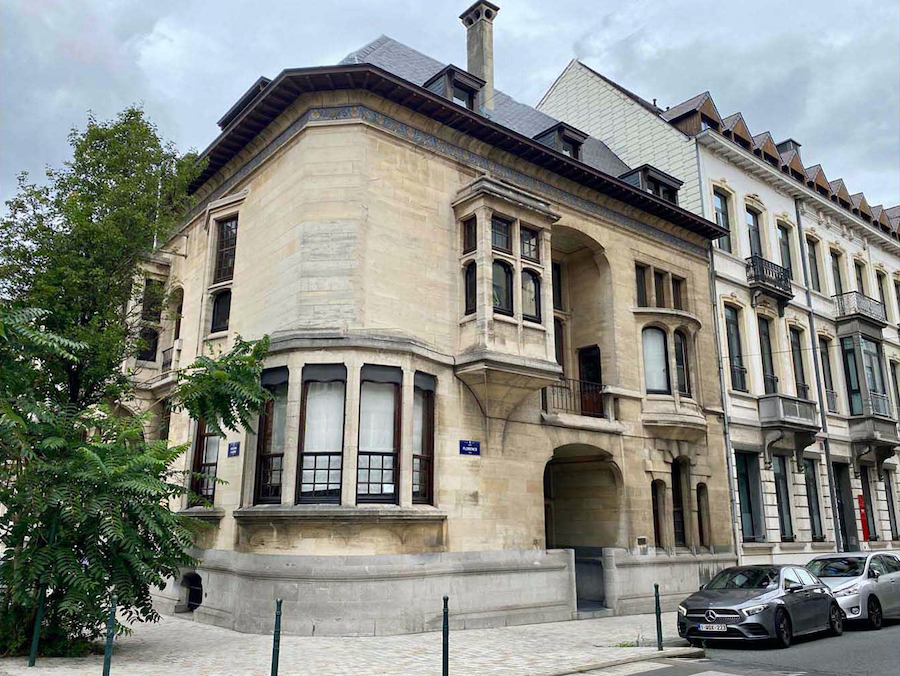
admirable-facades
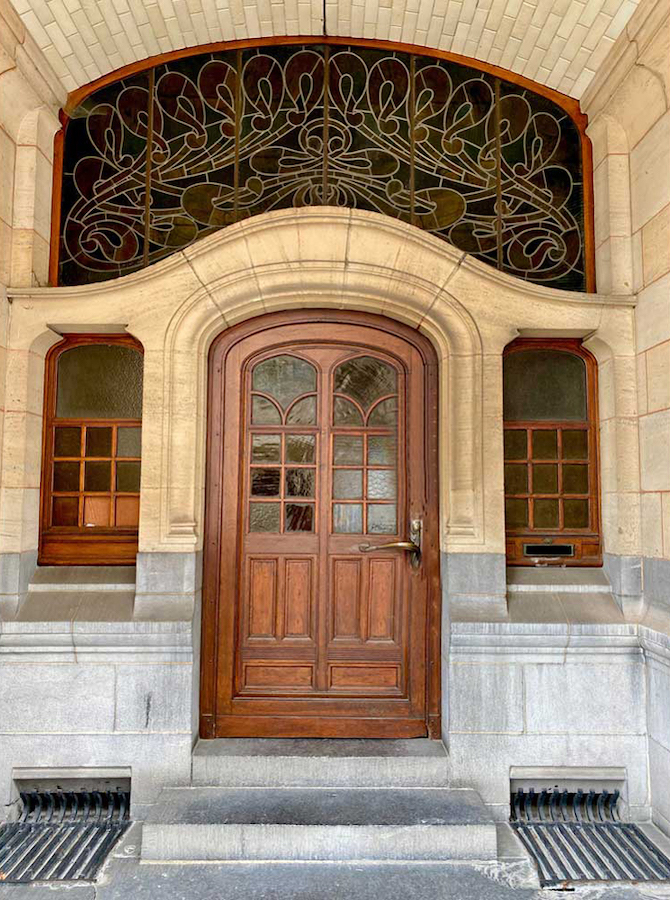
admirable-facades
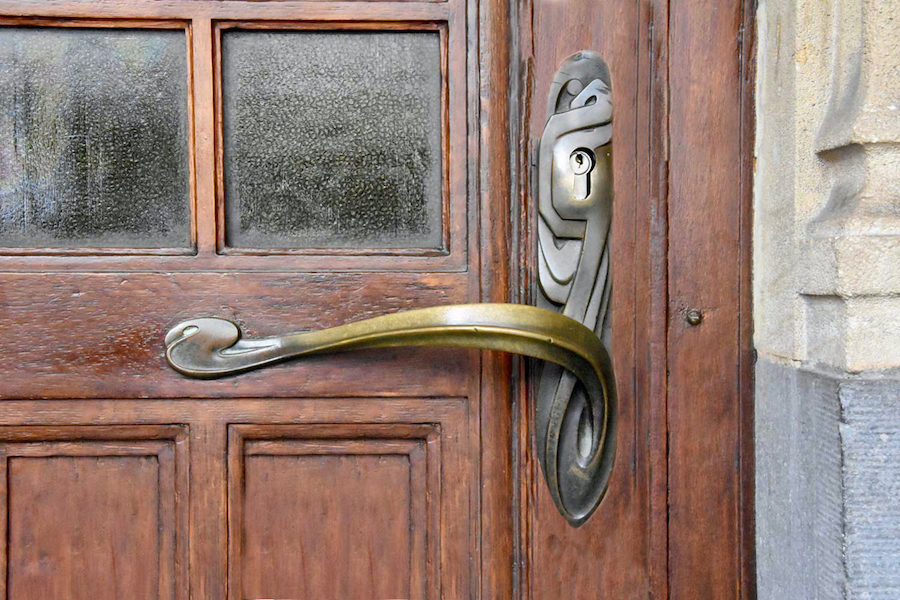
admirable-facades
The Hôtel Otlet, a corner hotel with an Art Nouveau façade designed by architect Octave Van Rysselberghe, is a surprising piece of architecture, with asymmetrical but very sober elements that are the antithesis of the rococo excesses of some Art nouveau architects. The interior, designed in collaboration with Henry van de Velde, is built around a monumental staircase leading to the various rooms.
Rue de Florence 13, Brussels
3/The ”PRE-NEW”
The former office building of RVS
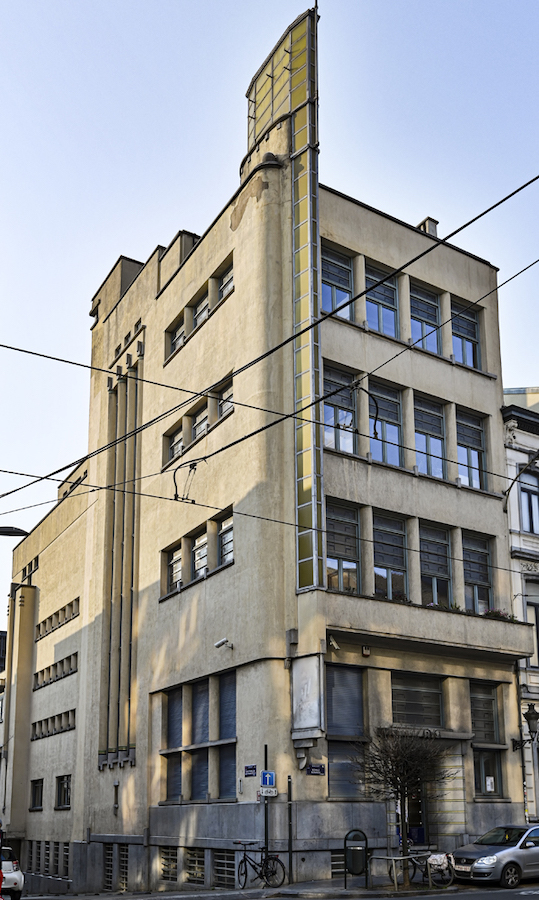
Endre Sebok
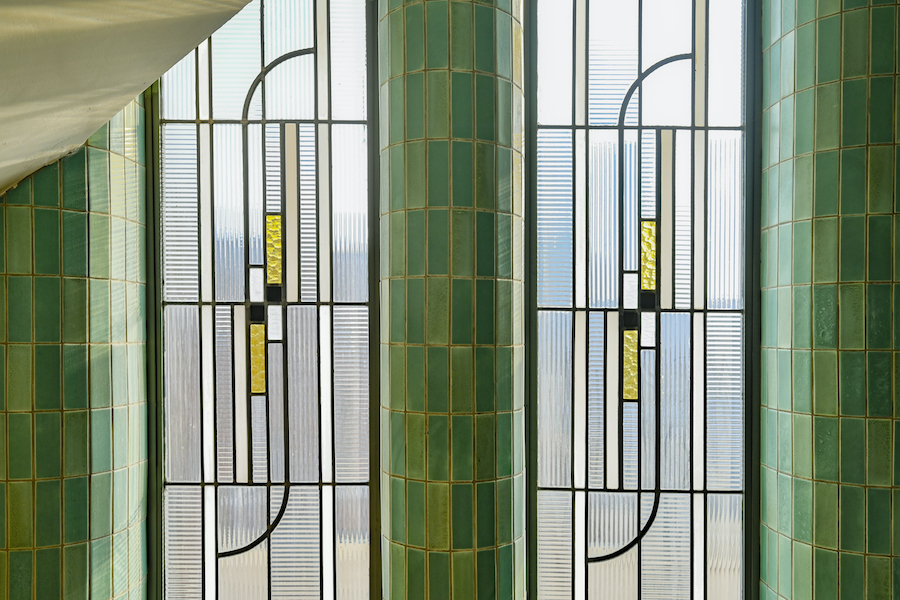
Endre Sebok
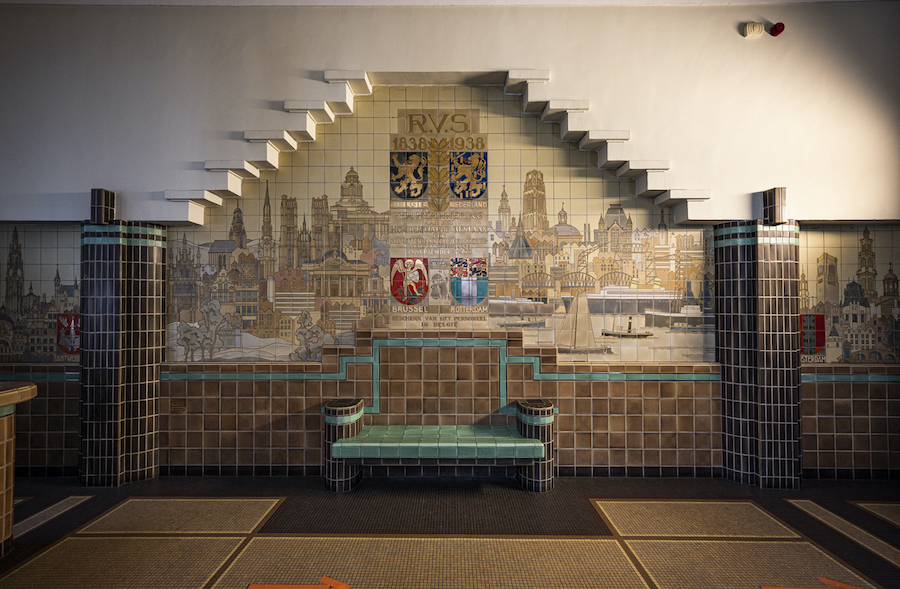
Endre Sebok
On Koningsstraat, the facade of a former RVS (Rotterdamsche Verzekering Societeiten) office building looks proud but austere. It has regular bay windows and a tall, illuminated glass banner that gives it a distinctive look. Built by Dutch architect Jos Duijnstee in Art Deco style.
Inside, you can admire the RVS logo and coat of arms, which are part of a beautiful fresco painted on tiles. The municipal administration of Saint-Josse-Ten-Noode has been listed since 1988 and has housed part of its administration here.
Rue Royale 284, Saint-Josse-Ten-Noode
The baths of Saint-Josse
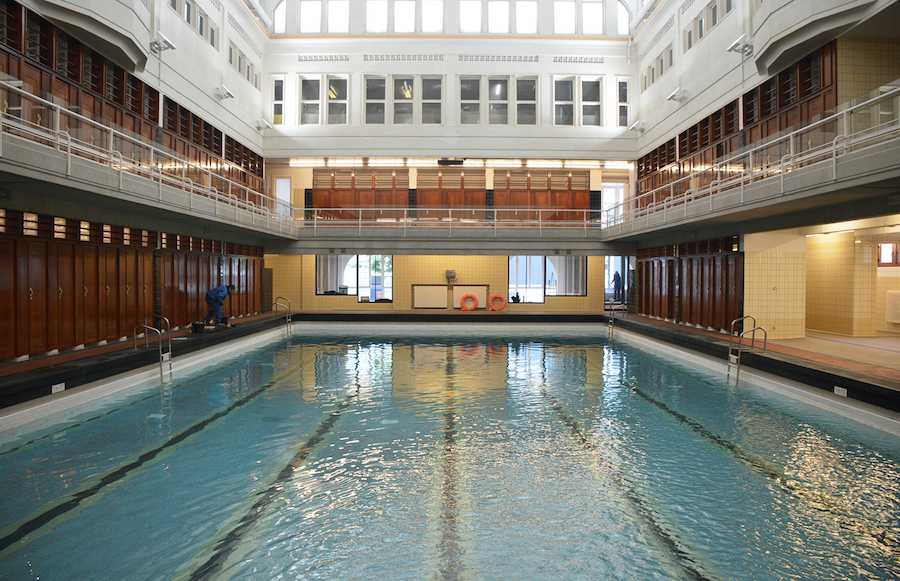
Dominika Figini Kasprzyk
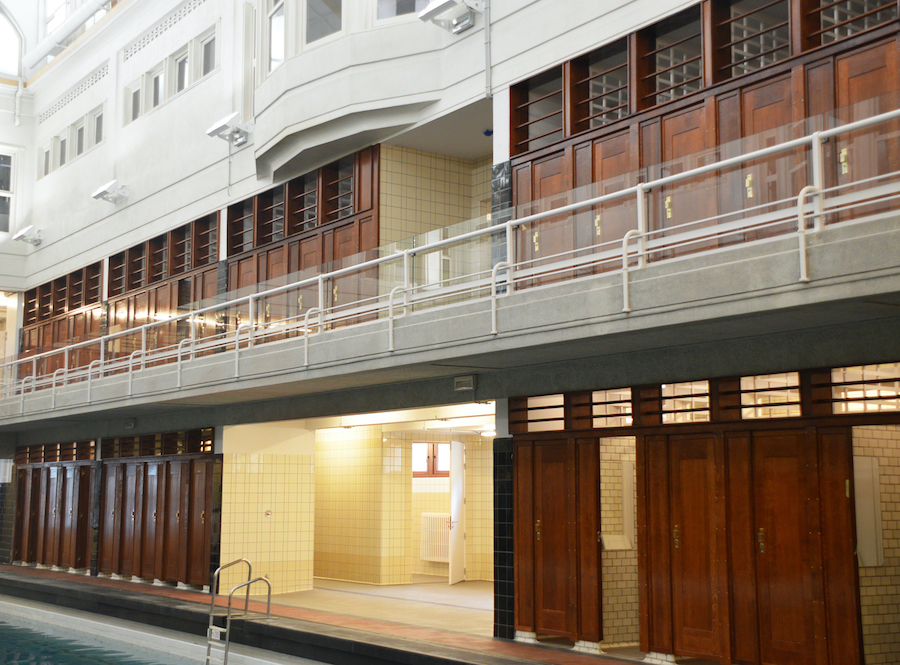
Dominika Figini Kasprzyk
Not far away, the Saint-Josse baths, still in use and open to the public, were built at the same time by the municipality with workers’ houses.
The project, for which a competition was launched, was won in 1913 by architects Joseph Bytebier and Charles Schaessens. Delayed by World War I, the project was resumed in 1930 with revised and modernised plans. Built in the purest Art Deco style, the complex now meets all current standards.
The beautiful wooden cabins, tiled floors and mosaics, marble staircases and water jets, the hall covered by a barrel vault resting on concrete arches and the large bay windows at the top are all worth seeing. The two-storey cabins open directly onto the pool or an open gallery. One of the most beautiful pools in the Brussels region.
Rue Saint-François 23/27, Saint-Josse-Ten-Noode
4/The “NEW 2024”
The former Pathé Palace cinema
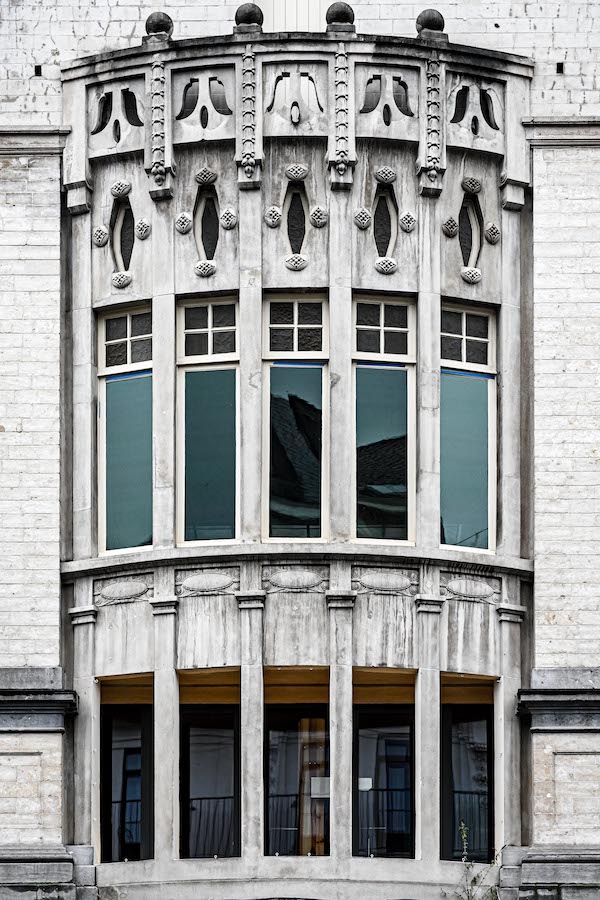
Endre Sebok
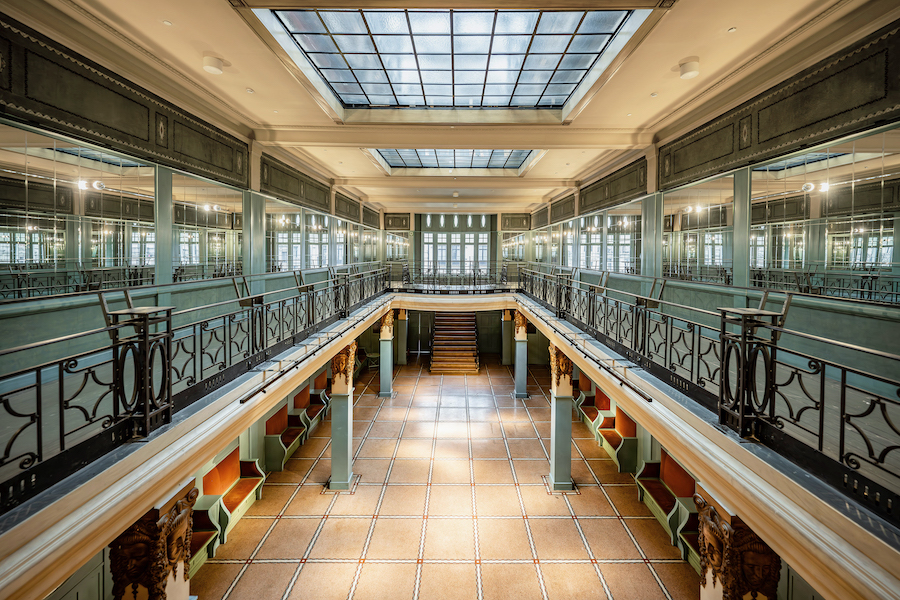
Endre Sebok
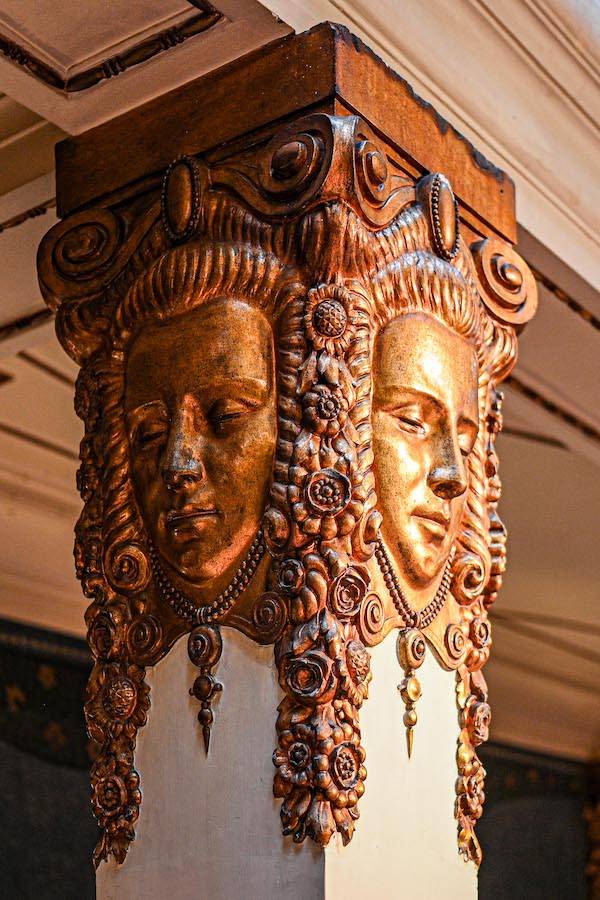
Endre Sebok
The former Pathé Palace cinema is the first example of a brasserie-style concert hall in Brussels.
It was built in 1913 by architect Paul Hamesse in a geometric Art Nouveau style that already foreshadowed Art Deco. The cinema could seat 2,500 people, with a parterre, two balconies, foyers, annexes and a large basement bar. This exceptional capacity made it the “biggest cinema in the capital”. After a lengthy restoration, the Palace reopened its doors in 2018. The tour focuses on the Hamesse foyer and gallery, which have been restored to their original state.
Avenue Anspach 85, Brussels
Not to be missed:
2 architectural gems: the Roosenboom and Danckaert houses, which have never been visited before.
The courses can be discovered on foot or by bike;
Guided tours, exhibitions, workshops, lectures, tastings and family activities.
Information:
The BANAD Festival (https://www.banad.brussels/) is organised by Explore.Brussels and its member associations:
-
-
- ARAU – www.arau.org
- Arkadia – www.arkadia.be
- Bruxelles Bavard – www.bruxellesbavard.be
- Pro Velo – www.provelo.org
-
Dates:9 et 10 March, 16 et 17 March, 23 et 24 March 2024
Practical information and bookings: https://www.explore.brussels/fr/
